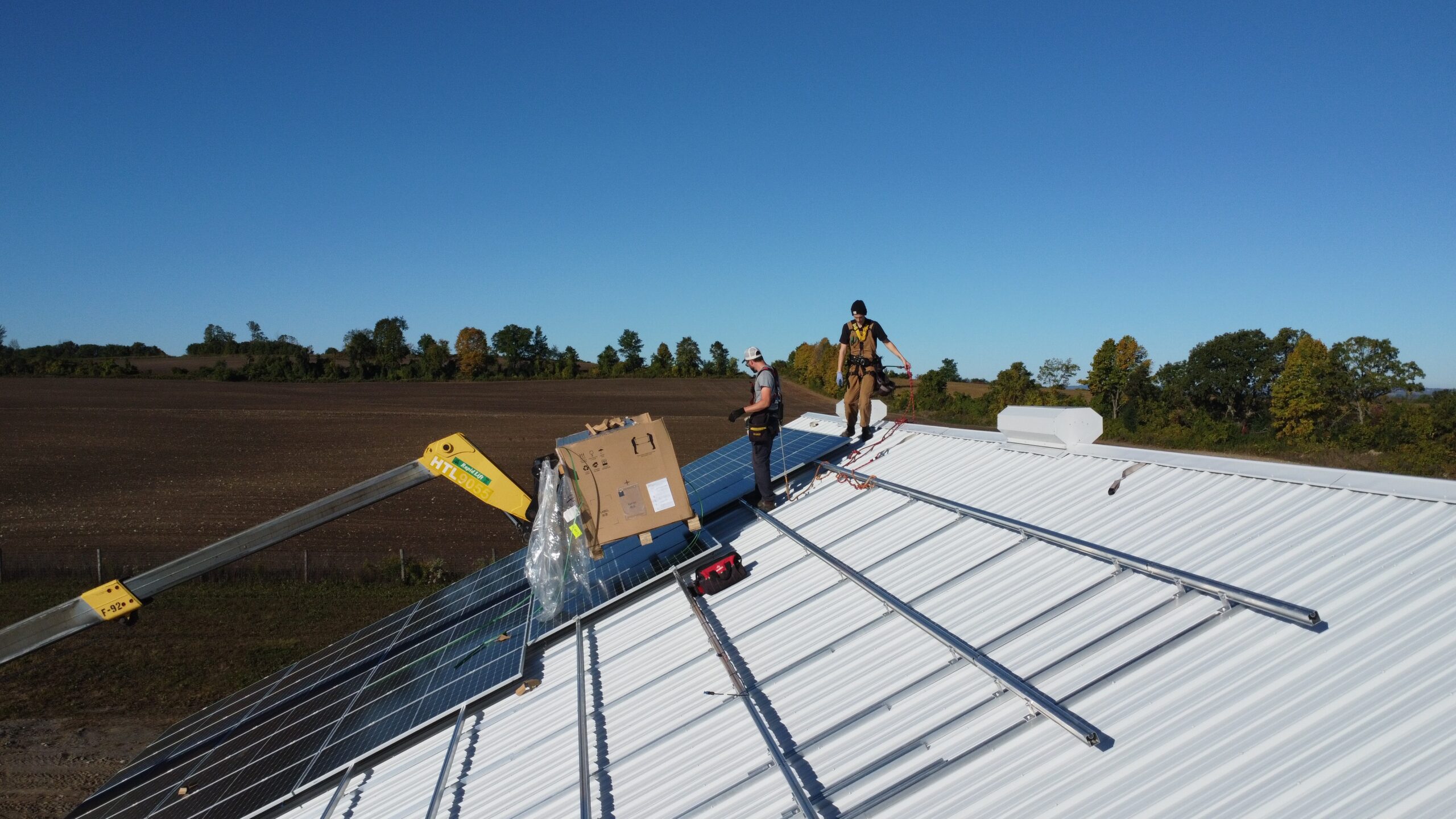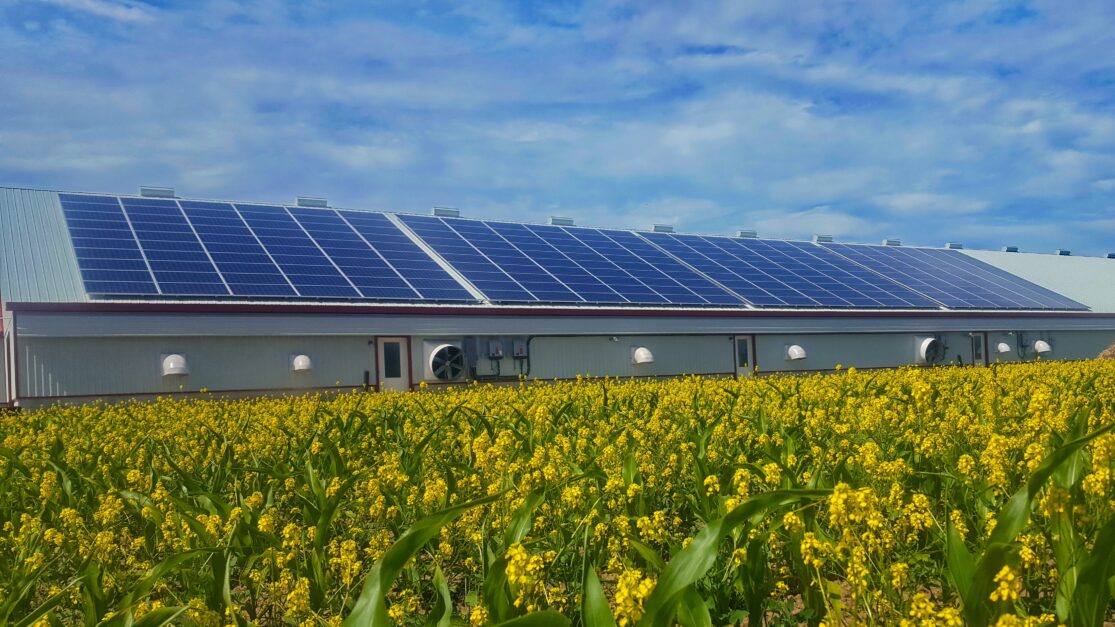Shining a Light on Agriculture: Solar Solutions for Greener Farming

By Emma Macdonald, Manager of Agricultural Innovation and Stewardship at Farms at Work in collaboration with Green Economy Peterborough
Farmers have been harnessing the power of the sun to cultivate crops and sustain their communities for millennia, so it’s no surprise that on-farm use of solar power is a perfect fit for many agribusinesses.
Solar power offers farmers the opportunity to decrease their dependence on fossil fuels, reduce electricity costs, produce a secondary income, and provide power to remote locations. The most recent agricultural census reported a significant uptick in on-farm solar usage across Canada, from 4.5% of farms in 2015 to 7.7% in 2021. Ontario farms currently account for over one third of the total number of agribusinesses producing solar energy, more than any other province.[i]
“Farmers and clean energy are a great match because farmers are in it for the long haul,” says JP Pawliw, co-owner of Generation Solar, a local solar installation service provider. “They see the long-term benefits of solar energy and they are comfortable with capital investment. In addition, farmers have a lot of skin in the game; they depend on a healthy climate for their livelihood.”

For many of us, large installations are what come to mind when we think of using solar to supplement agricultural activities. This will be the main focus of Solar for Small Business: Installation Options and Funding for SMEs & Farms, a Green Economy Peterborough and Farms at Work webinar on February 8, 12:00pm – 1:00pm. This learning event for the business and farming community will feature the expertise of Generation Solar with input from Woodleigh Farms, a Cavan-based, diversified cash crop farm featuring a passive solar greenhouse, and Lake Edge Cottages, a resort business that installed 110 panels on their buildings this past summer.
However, opportunities for on-farm solar power are extensive and go far beyond large installations; solar can replace or supplement almost all jobs that use fossil fuels or electricity. Perhaps the most common on-farm solar application is electric fencing, a critical element for livestock management. Whether permanent or movable, opting for solar-powered fencing is a straightforward and effective way to decrease reliance on the electrical grid.
Solar-powered water pumping systems are another common application for livestock or irrigation purposes, and can help reduce dependence on gas-powered pumps. Solar water solutions are particularly beneficial in rural areas and off-grid locations where Agricultural Best Practices dictate that livestock herds be prevented from accessing natural bodies of water.

Solar power can even provide dependable heating sources for barns, greenhouses, or other agricultural facilities. Dairies, in particular, require large amounts of hot water for frequent flushing of milk lines and storage tanks. Up to 40% of dairies’ electricity consumption is attributed to heating water[ii] so integrating solar into these systems can offer significant cost savings.
The incorporating solar power into farming practices presents an exciting opportunity for those looking to decrease their carbon footprint, lower energy costs, and lessen dependence on fossil fuels. As technology advances and the economic landscape evolves, the use of solar power in agriculture is poised to grow exponentially, providing Ontario farmers with sustainable, reliable, and economically viable energy solutions.
[i] Census of Agriculture, Statistics Canada. https://www150.statcan.gc.ca/n1/pub/96-325-x/2021001/article/00016-eng.htm
[ii] Guelph Solar, https://guelphsolar.net/blog/dairy-operation-case-study

